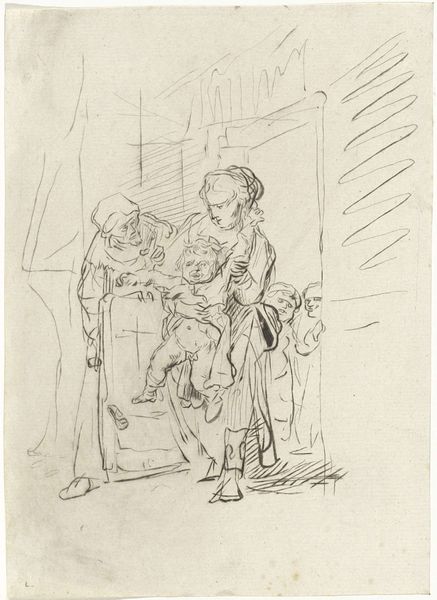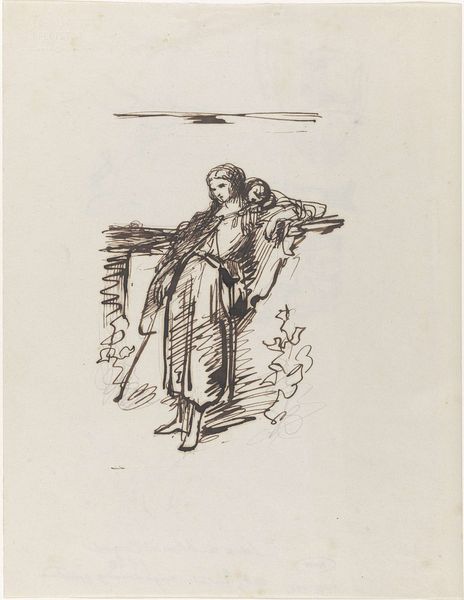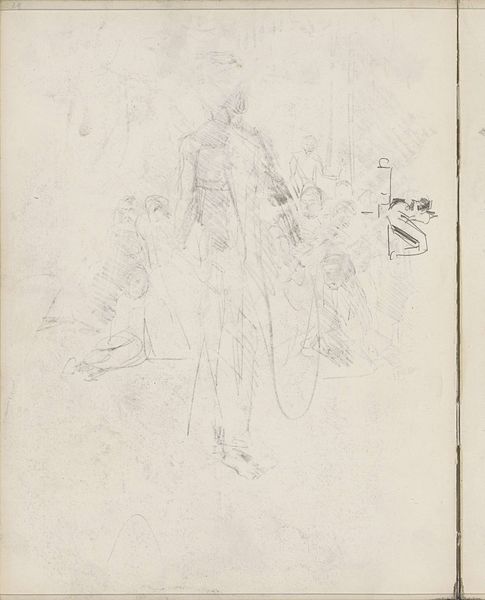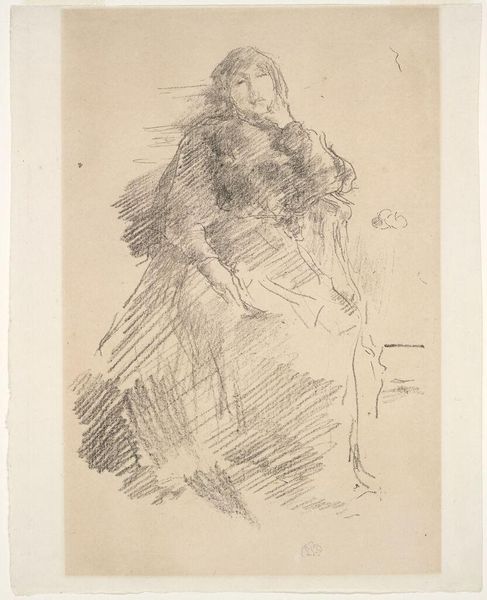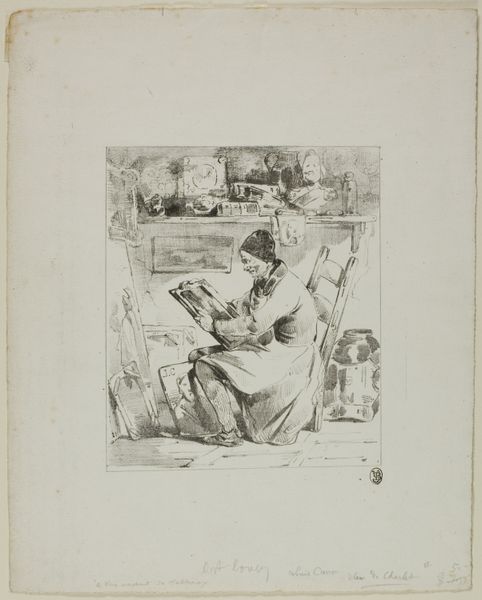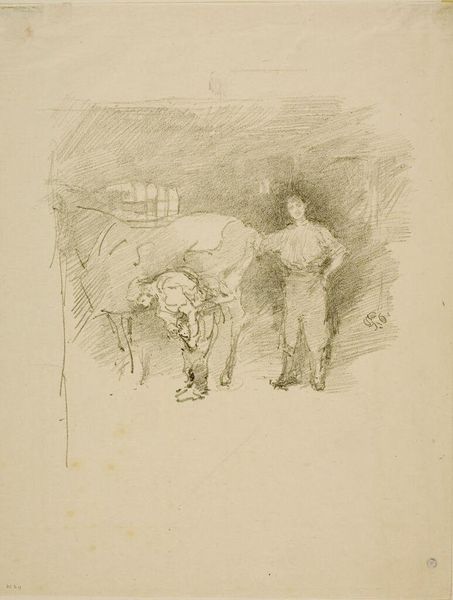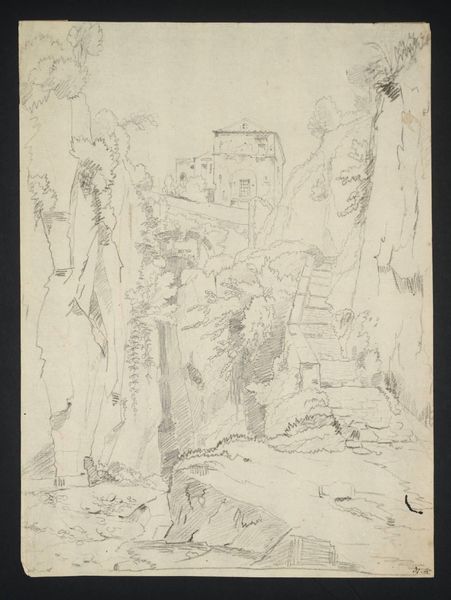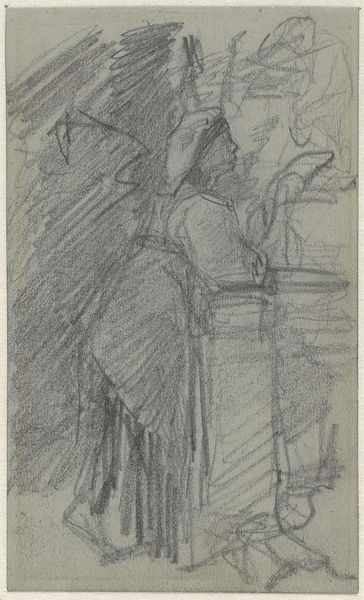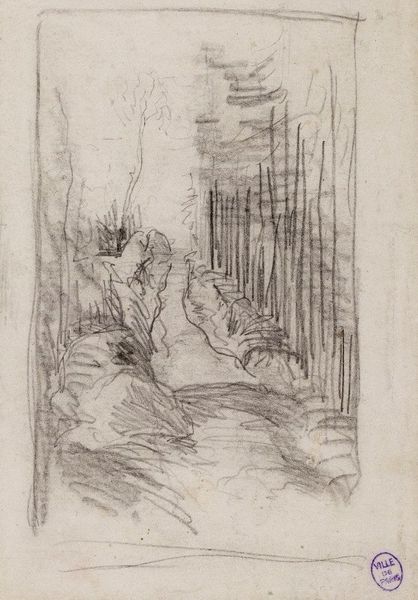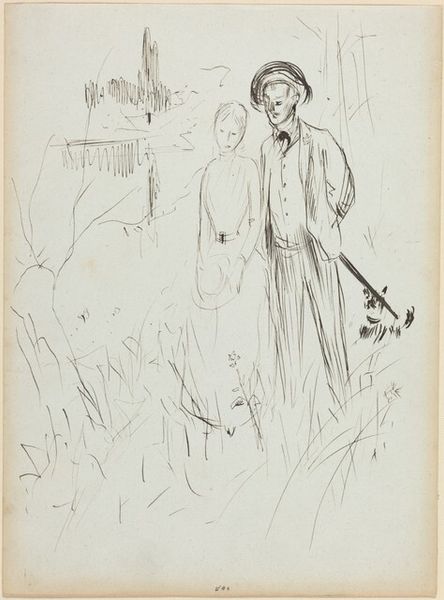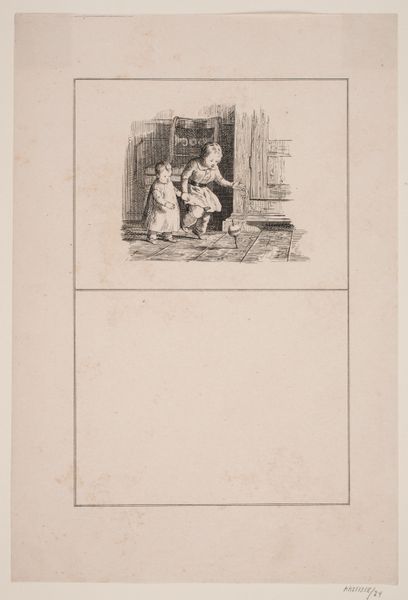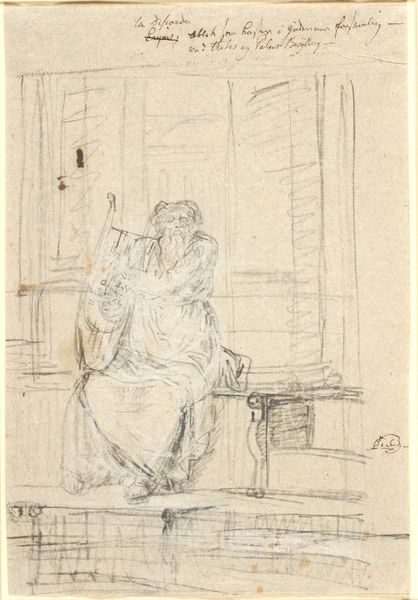
drawing, pencil
#
drawing
#
pencil sketch
#
figuration
#
pencil drawing
#
pencil
Dimensions: height 213 mm, width 275 mm
Copyright: Rijks Museum: Open Domain
Curator: This pencil sketch, created around 1860 by Johan Michaël Schmidt Crans, is titled "Sketches at the Spectator Meeting". It depicts a figure leaning against what seems to be a wall or ledge, with some abstracted elements above. What's your immediate take on this work? Editor: The fragility of the medium lends an air of transience. It's dreamlike. The pencil lines feel hesitant, searching for form, which gives it a potent emotional honesty. I immediately connect that openness to feelings of empathy and nostalgia, of remembering a moment rather than precisely recreating it. Curator: It's fascinating that you bring up the idea of searching because that's very relevant when understanding the social context. These figures may well have been attendees at public meetings, which were arenas where political and social ideas were debated. Think of it almost as an early form of social media influencing policy! These drawings weren’t for art’s sake per se, they reflect documentation and quick records of influential figures from that era, shaping popular thought. Editor: So, each sketched symbol captures perhaps not just a person's likeness, but an ideology in flux, visualized and circulated, helping spread social views within contemporary popular opinion. Is it also worth interpreting her body language? The slumping posture, combined with the soft, almost melancholic gaze feels deliberately unassertive; her gesture seems laden with reflection or perhaps even defeat. Curator: Indeed. Even her fashion, from a present-day point of view, seems timeless but was a sartorial choice related to 19th-century gender identity. What I find equally significant is the location—the Spectator meeting—suggests spaces becoming increasingly visible within burgeoning public debate and opinion-making. Crans recorded an audience becoming part of societal shifts that are being formalized. The choice of subject itself shows an artist observing changes beyond gallery walls and reflecting contemporary society, or a portion of it. Editor: Thinking about cultural memory, then, how would an artwork such as this survive those spaces and conversations from its specific location, as we reflect on it through current times? Its emotional vulnerability is its strength: the loose application suggests impermanence, an individual within society. In art’s symbolic potential lies enduring truth. Curator: A truly perceptive insight. Thank you. By delving into not only aesthetics but also delving back in time and looking at themes embodied at key inflection points.
Comments
No comments
Be the first to comment and join the conversation on the ultimate creative platform.
